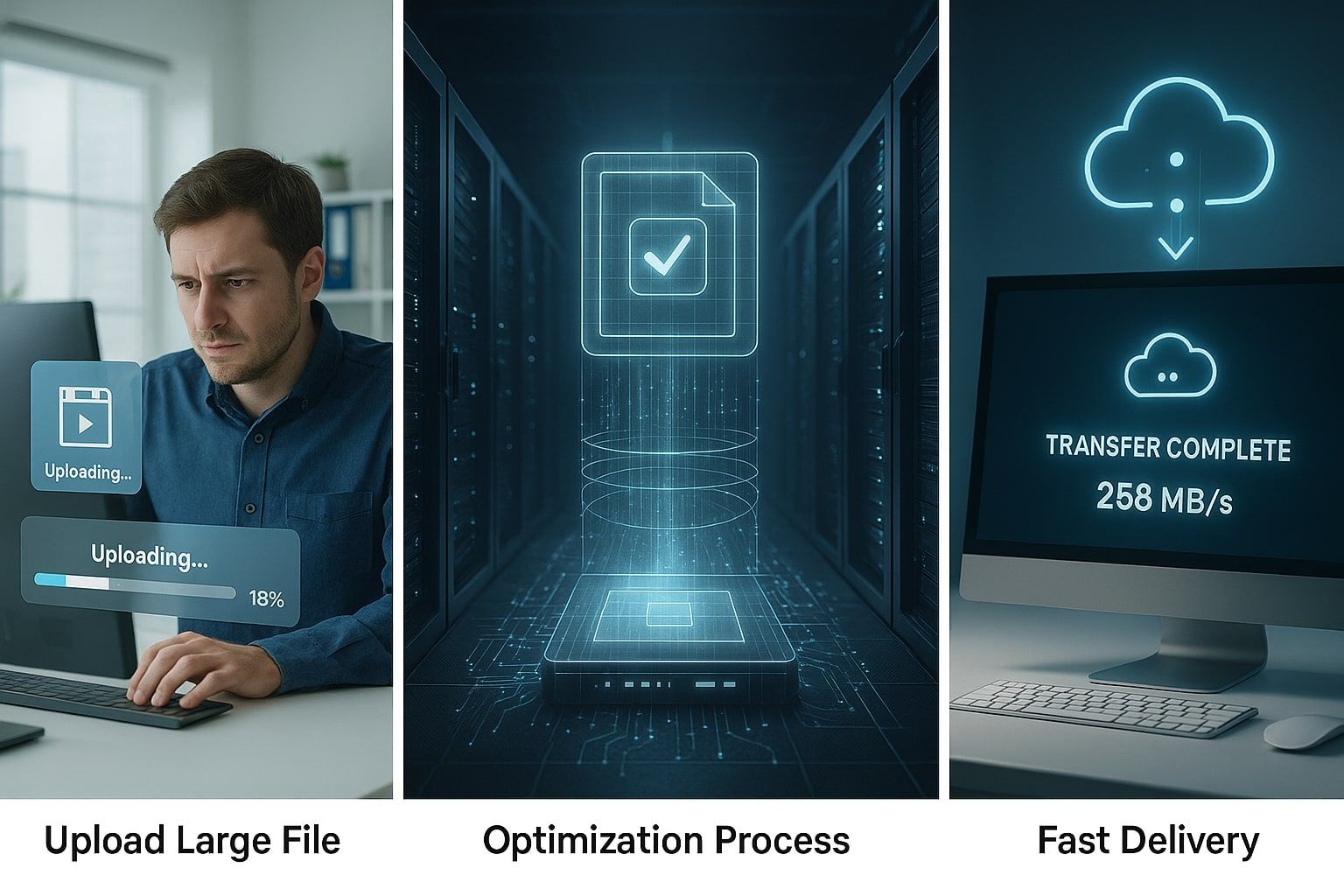Large Files, Limited Connectivity: How Data Optimizer API Improves Transfer Speed
In the digital workspace, a familiar and frustrating scenario often unfolds. A team member spends hours finalizing a critical project file—a high-resolution video render, a complex 3D architectural model, or a comprehensive market analysis dataset. T
In the digital workspace, a familiar and frustrating scenario often unfolds. A team member spends hours finalizing a critical project file—a high-resolution video render, a complex 3D architectural model, or a comprehensive market analysis dataset. The file is ready for delivery, but the transfer process reveals a significant bottleneck. The progress bar crawls, and hours are lost to waiting. In the worst cases, an unstable network connection fails entirely, forcing the entire process to restart from scratch.
This situation represents more than a minor inconvenience. It is a tangible drain on productivity, a source of team frustration, and a genuine barrier to seamless collaboration in today's distributed work environments. The core challenge is clear: file sizes continue to grow exponentially, while network reliability and bandwidth remain inconsistent across global operations.
Understanding Data Optimizer API
A Data Optimizer API is a programmable interface that intelligently manages and accelerates data transfers through advanced optimization techniques. Unlike traditional file transfer methods, this API acts as an intelligent layer between the source and destination, employing sophisticated algorithms to analyze, compress, and streamline data movement.
See also: When Document Overload Slows Productivity: How AI Document Processing Simplifies Access
The High Cost of Inefficient Data Transfers
When large files meet limited connectivity, the impact on business operations is direct and multifaceted. Projects experience delays as teams wait for essential assets to arrive. Missed deadlines can strain client relationships and incur contractual penalties. From a resource perspective, inefficient transfers consume excessive bandwidth, increasing operational costs while slowing down other critical online activities. Perhaps most significantly, these technical hurdles can lead to data corruption during interrupted transfers, compromising the integrity of vital business information.
Traditional file transfer methods like FTP or even standard HTTP/S protocols are often inadequate for these modern demands. They typically lack the intelligence to adapt to poor network conditions, treat files as monolithic objects vulnerable to interruption, and fail to optimize data before sending.
A Strategic Approach: Intelligent Data Transfer
The solution lies in moving beyond basic file sending to a more strategic, intelligent approach to data movement. This is where a dedicated Data Optimizer API creates a transformative impact. Instead of merely pushing bytes from one location to another, this technology actively manages and optimizes the entire transfer process.
Think of it as the difference between mailing a large, fragile item in a single oversized box versus using a sophisticated logistics service. The former is risky and inefficient. The latter intelligently packages, tracks, and ensures the efficient, secure arrival of every component.
How Data Optimizer API Works
Here’s a breakdown of what the Data Optimizer API enables:
- The application server connects to a compression server through API integration.
- The original file is automatically compressed while maintaining its visual and structural quality.
- The optimized file is then transmitted back through the network, using less bandwidth and storage, delivering faster downloads and improved system performance.
Importantly, the Data Optimizer API is not a replacement for your existing network or storage stack, it’s an enhancement. It integrates into the workflows you already have, so your team doesn’t need to reinvent the data-movement process.
Related topic: How Data Compression Drives Efficiency in Digital Transformation
Practical Applications Across Industries
The utility of a Data Optimizer API extends across multiple sectors where large data movement is routine:
- Media & Entertainment: Accelerates the upload of raw video footage and graphic assets from production sites to post-production studios and cloud archives.
- Engineering & Construction: Enables reliable transfer of massive BIM models, CAD files, and LiDAR scans between head offices, remote job sites, and contractor networks.
- Healthcare: Facilitates the fast and secure transmission of large medical imaging files (DICOM), such as MRI and CT scans, supporting timely diagnostics and telemedicine.
- Global Enterprises: Ensures branch offices with varying internet quality can reliably sync large datasets and backup information with central cloud repositories.
AssistX Lite: Your Strategic Partner in Seamless Data Transfer
AssistX Lite helps enterprises overcome connectivity limits through intelligent compression and smart data transfer. Its Data Optimizer API reduces file sizes, speeds up transmission, and preserves original quality delivering faster performance and lower storage costs without changing existing infrastructure.
By making data flow lighter and more adaptive, AssistX Lite turns bandwidth constraints into efficiency gains. With the Data Optimizer API, your business moves faster, operates smoother, and stays connected, no matter the network condition.
Contact us and learn more about how AssistX Lite and the Data Optimizer API can optimize your data movement!
Explore more: The Future of Document Smart Processing: AI-Driven Efficiency and Automation


